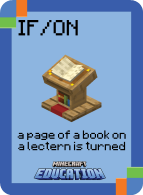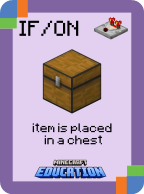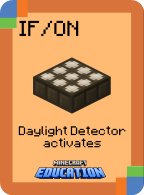Teaching Important Coding Skills with Slash Commands in Minecraft Education
- Nathan Richards

- Sep 29, 2023
- 3 min read
Updated: Dec 19, 2024
In education, Minecraft has emerged as a powerful tool for engaging students and fostering creativity. But did you know that it can also be used to teach coding skills? Enter the "Learn to Code with Commands" program, a comprehensive educational initiative that leverages Minecraft's slash commands to teach students vital coding skills while they explore and build within the game. In this blog post, we'll explore how this program works and why it's an excellent resource for educators and students.
It All Starts with the Cards
The coding cards are at the heart of the "Learn to Code with Commands" program. These cards serve as an introductory tool, helping students grasp the concept of using commands as algorithms. Educators can use the unplugged activities provided with the cards to guide students through this initial learning phase. Encourage students to use the cards to create visual representations of algorithms before transitioning to in-game coding. They can also use the cards to design algorithms and challenge their peers to test them. This hands-on approach sets the stage for students to write algorithms tailored to the specific context of their Minecraft game.
Learn Inside the Game
Learning by doing is a powerful educational method, and that's exactly what the program offers. Students can jump into the "Learn to Code with Commands Training World," where they'll find walk-through tutorials for each trigger and command. Additionally, pre-designed gaming scenarios are available for exploration, allowing students to familiarize themselves with the mechanics before creating their games. Each section of the world is aligned with the program's lesson plans and includes video tutorials to aid learners in their journey.
Progress with Our Lessons
The program is meticulously planned to provide students with a structured learning experience. Each command and trigger is accompanied by a guided lesson, including:
Scaffolded explanations
Guided video tutorials
In-game examples in the training world
Opportunities for students to demonstrate their understanding
These lessons are color-coded to indicate their difficulty levels, making it easy for educators to align them with their students' literacy and numeracy skills.
Program Options
The "Learn to Code with Commands" program offers two distinct options for educators:
Option One: Online Course
Enroll students in the online course, where they'll be guided.
Self-paced lessons with additional summary video lessons.
Knowledge checks at the end of each module.
Certificates of completion.
Teacher access to student results.
A pack of coding cards and a keychain.

Option Two: Comprehensive Lesson Plan
Download the comprehensive lesson plan with step-by-step activities and opportunities for students to showcase their learning.
Purchase coding cards separately to gain access to exclusive unplugged activities.
Alignment with Educational Standards
The program aligns seamlessly with technology achievement standards. Students engage in activities that involve:
Creating simple digital solutions aligned with user needs.
Describe and implement algorithms with branching and iteration.
Utilizing digital tools for content creation, sharing, and collaboration.
Defining problems based on design criteria and user stories.
Generating, communicating, and comparing designs.
Elaborating on game design ideas with peers, focusing on user needs and multiple solutions.
Implementing algorithms as visual programs involving control structures, variables, and input.
The "Learn to Code with Commands" program harnesses the immersive world of Minecraft to teach students valuable coding skills. By starting with coding cards, progressing to in-game experiences, and following structured lessons, students not only learn to code but also develop problem-solving and critical thinking skills. This program not only aligns with educational standards but also makes coding fun and engaging. So, why wait? Dive into Minecraft Education and watch your students transform into coding wizards.














Comments